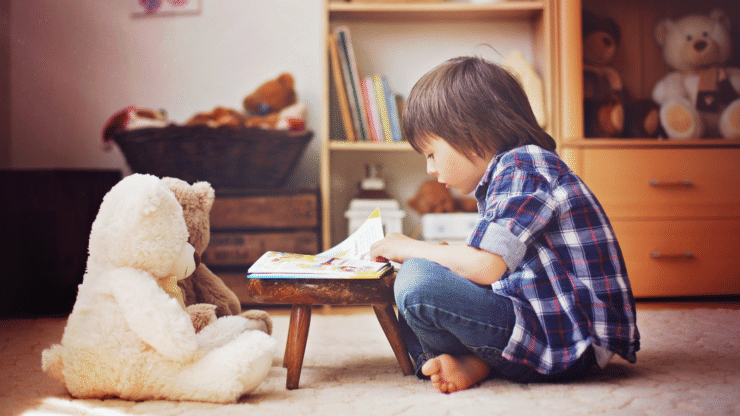The first six years of a child’s life are critical because children grow so fast in such a short time. These early years will set the foundation for how a child will learn and act for the rest of their life.
I like the Reggio Emilia learning approach because it’s child-driven. Children get to choose what they want to do and learn more organically as a result. They’re taught how to think instead of what to think and are encouraged to be independent, confident, imaginative, curious, and creative.
Your child doesn’t need to be enrolled in a Reggio Emilia school for you to be able to apply some of the Reggio Emilia philosophies at home. Anyone can do it, and it’s straightforward! Plus, it’s beneficial for your child.
Encourage Your Child’s Interests
Let your child tell you what they want to learn about and encourage them by giving them materials to explore that topic further. Ask them questions and listen to their opinions on the subject.
ALSO: Does Self-Directed Learning Breed Success?
This is about gently guiding and presenting things to your child based on their interest. Please don’t force it and don’t overdo it.
If your child suddenly stops being interested in bugs and likes aliens now, that’s fine. Let them switch to a new interest and explore freely!
Have Open-Ended Toys and Materials
Reggio Emilia classrooms look pleasant and relaxing because most furniture and toys are made from natural materials that stimulate creativity. These supplies are cheap and easy to find in most places.
Toys should be open-ended for children so that they have many ways to play and use them. Wooden blocks, fabric dolls, toy animals, and fabric food are all great for kids and offer many ways to play. You can check out this list of Reggio Emilia toys for more ideas.
Even though puzzles typically are not open-ended, they’re good for a child’s mind and stimulate their brain. Even babies enjoy puzzles.
ALSO: Comparing Waldorf vs. Reggio Emilia
Try to stay away from flashy toys that need a battery to operate. Kids should use their imagination instead.
Encourage Independence
Kids need to learn independence and help themselves as early as possible. Babies start trying to feed themselves at eight months, so let them! Babies should be exploring food with their hands and squeezing it. That’s how they learn what food is and how to eat it. If that means they end up being covered in spaghetti, so be it!
Toddlers can be taught to eat and drink by themselves, wash their hands, take off their shoes, and help put on their clothes. Toddlers can also clean up after themselves by putting their dishes away and picking up their toys. Older kids can choose their clothes for the next day, pack their backpacks, help you cook, etc.
ALSO: Parenting Style — Are You Authoritative, Permissive, or Authoritarian?
When children are independent and encouraged to do things for themselves, they’re more confident and much happier. Kids feel proud when they’re able to do something they couldn’t do before. They are always eager to talk about their achievements.
Have Furniture and Decorations at Their Level
Since the Reggio Emilia philosophy encourages a child to be as independent as possible, everything in a Reggio learning environment is child-sized and at their level, so they can sit and grab materials without needing adult help.
ALSO: What is the Flipped Classroom Model?
Your entire home doesn’t need to be child-sized, but you can get a small chair and table for your child to eat at or do activities on. Make sure that any material you want them to have easy access to, like books, art supplies, and toys, is all easily reachable.

Crates and Baskets are Your Friends
You should consider buying cheap crates or baskets for books, toys, and other materials. That way, your child can grab things as needed and easily put them away. Your child’s art and decorations in their room should all be at eye level so they can easily see it.
You don’t need to spend a lot of money or hit all these points to apply the Reggio philosophy at home. The most important thing is that you allow your child to be in charge of their learning journey and support them by giving them the tools and encouragement they need to learn, be creative, and be independent.









Add comment